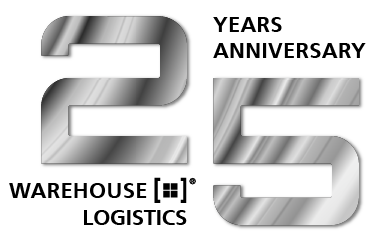News
Implementation of EWM and integration of two automated warehouses with MFS
08.03.2022
Finished goods and spare parts are stored in the English warehouse locations for shipment to customers and craftsmen. However, a large part of the warehouse is also used to supply production of the various production facilities distributed throughout the country. Globally, the group relies on SAP as its ERP system. The previous warehouse management system was SAP WM, which is integrated in the existing SAP ERP system and has been expanded over the years through extensive in-house developments.
Our customer:
One of the largest sanitary ware companies in the world employs over 30,000 people on six continents. The product range includes washbasins, toilets, taps, shower trays and much more.
In England, the Group has several production and warehouse sites, where about 700 employees are distributed throughout the country. The company produces faucets, bathroom fixtures, washbasins, toilets, bathroom furniture and showers.
Initial situation and project objective:
Finished goods and spare parts are stored in the English warehouse locations for shipment to customers and craftsmen. However, a large part of the warehouse is also used to supply production of the various production facilities distributed throughout the country. Globally, the group relies on SAP as its ERP system. The previous warehouse management system was SAP WM, which is integrated in the existing SAP ERP system and has been expanded over the years through extensive in-house developments. The intralogistics applications were partially paperless using RF handheld devices and barcode scanning based on ITSmobile.
In 2019, the customer laid the foundation for a new national central warehouse (NDC). Due to a high degree of automation, massive efficiency and cost advantages had to be achieved – in contrast to the existing solutions. For the realization of this project, intralogistics systems from psb intralogistcs GmbH in Germany were implemented. This manufacturer of automation systems for intralogistics has a strong presence in the UK and is appreciated by customers across many industries.
The new central warehouse is equipped with a multi-aisle automatic pallet high-rack storage system, a multi-aisle container high-rack storage system, and a sorting and sequencing area. At the picking stations, materials can be picked simultaneously from pallets and from containers and picked across deliveries. At the goods receipt area, pallets are automatically transferred to the conveyor line at the high-rack storage area via driverless transport systems. A separate pick-by-light area has been set up for shipping spare parts with packages.
The implementation of the entire solution was to remain in the SAP system. The customer decided to implement the new SAP EWM with direct connection of the automatic plants via MFS (material flow control) in order to control both the inventory management and the conveyor technology. The system was set up as an external EWM system and integrated with the existing SAP ERP system.
What has HPC achieved?
In complex logistics projects with a high degree of automation, the cooperation of the system manufacturer and the supplier of the warehouse management software is important. A major advantage during the conception and implementation phase was the existing partnership between psb intralogistcs GmbH and HPC Aktiengesellschaft.Both could thus contribute their special knowledge in an optimal way: psb in the provision of individually adapted automation systems for complex intralogistics systems; HPC with many years of experience in the realization of high-quality SAP business solutions for the logistics and supply chain sectors, especially with SAP EWM.
- Design of an EWM implementation concept
- Implementation of an EWM prototype
- Complete customizing to map all processes
- Connection of the integrated automatic warehouse subsystems for pallets and containers directly in SAP® EWM with integrated MFS
- Development of customer-specific requirements:
- Customization of the standard EWM RF transactions
- Goods receipt dialog for separation onto trays or pallets
- Creation of plan shipping HUs using an algorithm for planning the packaging of a wave
- MFS logic for stock removal of source pallets for planned shipping HUs in a specific sequence (up to 70 sequences per pallet)
- Picking dialog for parallel processing of three planned shipping HUs per workstation
- Dialog for PutWall placement/picking/packaging
- Connection of automated guided vehicles (AGV) to MFS
- Knowledge transfer to employees
- Conducting trainings and creating documentation
- Cut-over and go-live support
- Optimization phase for the implementation of small process improvements
Customer benefits:
- Use of the standard SAP® EWM software with use of the MFS component
- Customized processes with very low error rates
- Automation of processes in the new NDC
- Future-proof processes for the planned growth in the following years
Challenges:
- Large projects with agile project methodology require a different understanding of project work from everyone involved. Not all employees of the customer are on the same level concerning agile project work knowledge.
- Despite the Corona pandemic, the international project was implemented successfully
- Change management for employees in the warehouse to deepen the advantages of EWM in the standard compared to the strongly self-developed solution in the WM
